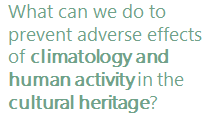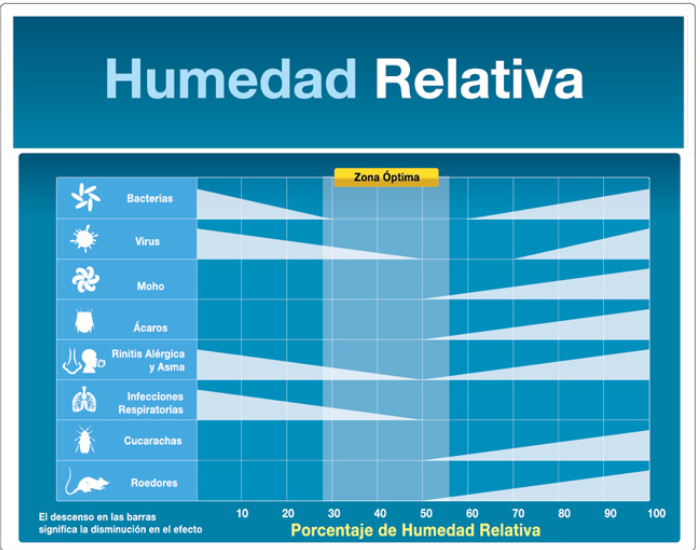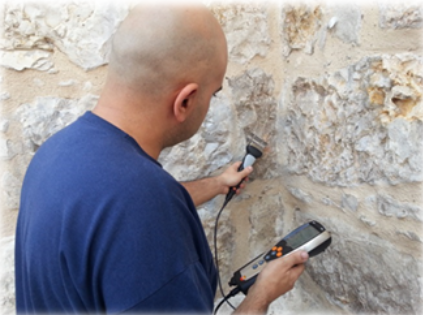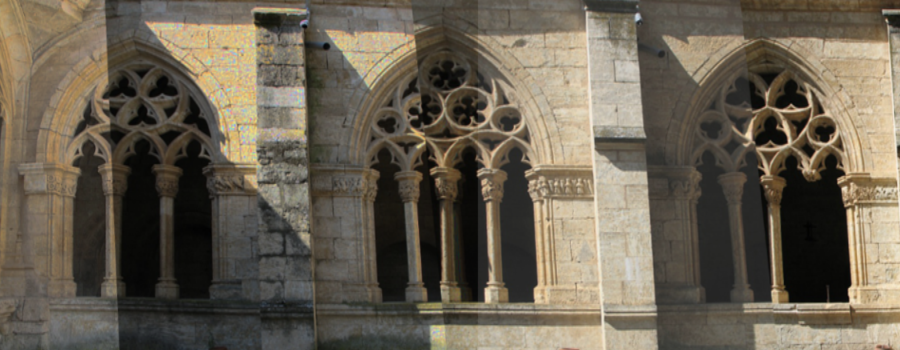In a previous post the social and economic importance of heritage conservation were already described. Also we promised that on successive posts we will go into more detail describing the three main aspects that need to be monitored to ensure such conservation. Refreshing your memory, they were:
- Relative humidity and temperature.
- Lighting (natural and artificial).
- Contaminants.

As promised is debt, in this post we will focus on the first point (be patient, we will talk about others further on), which makes us to face the heritage “bad boys”. Relative humidity and temperature are very damaging in the effects they can cause on the materials of which historic buildings are made of. Taking advantage of Physics, relative humidity is a very useful indicator of the water content in the air (vapour), and, on the other hand, temperature indicates the level of kinetic energy (movement) of the molecules of the air.
Both parameters vary according to the local meteorological conditions, the human actions and the conservation state of the historical buildings. This means that the atmosphere surrounding the historical buildings consist of a greater or lesser amount of water vapour at a certain temperature, definitely influencing the physical & chemical stability of the materials of which they are built on, or even of which the objects inside are composed.

In this sense, it is not negligible the effect caused by people, not only by our increasingly demanding comfort requirements, but by the number of visitors. We can influence the relative humidity and the temperature in such a way that inadequate values are reached. The effects of people are added to those of the local climate (more or less wet or warm), to the assets by itself (watertightness and ventilation capacity), to the derivatives of the proximity of heat sources (heating, sunny glass surfaces, old artificial lighting systems), the proximity of cold sources (external walls or air conditioning systems), as well as sources of humidity (leaks and floods).
The main factor to be controlled because the risk of direct deterioration that could originate is just humidity. The amount of water vapour in the air results in dimensional changes such as the well-known expansion and contraction of wood, making fractures and cracks when strong fluctuations happen. In addition, extreme relative humidity values cause softening or drying of organic materials such as adhesives and binders. But it also affects the stability of inorganic materials, such as metals, accelerating the corrosion processes, especially in the presence of salts. In poorly ventilation and dirty conditions, high values of relative humidity will cause the proliferation of living organisms causing biodeterioration (from microorganisms to rodents … Disgusting!). Even health problems as shown in the image.
Conversely, the temperature accelerates the chemical reactions and favours the biological activity. It contributes to the softening of waxes and adhesives and the loss of adhesion between different materials, such as enamels.
Perhaps reading all this causes some discomfort (and even itching …). But, what can we do to prevent these adverse effects? The answer is as simple as reasonable: just avoiding too high or too low levels of temperature and relative humidity, ensuring the highest possible stability
Following the indications of the IPCE (Spanish Cultural Heritage Institute, dependent on the Ministry of Culture), which establishes the National Preventive Conservation Plan (PNCP), the evaluation of risks derived from the microclimatic factors of which we are talking about, three aspects must be monitored:
- Extreme levels of relative humidity and air temperature.
- The magnitude and speed of fluctuations in relative humidity and air temperature.
- The proximity of sources of humidity and heating or cooling emission sources.

A wide range of sensors is available on the market to monitor temperature and humidity, either continuously or timely (see image). Indeed, it is necessary to know how to properly treat, interpret and integrate the data they provide.
What is not so frequent is using alternative methods to evaluate the effects of moisture on the materials of the built heritage. Even before these appear and the remedy is worse than the disease. CARTIF is a pioneer in the use of laser scanners to make this assessment. A recent article published in the prestigious international journal Studies in Conservation, together with the developments carried out for the European research project INCEPTION show that while 3D documenting a historical building, the level of humidity present in a known type of material could be registered in parallel. A trustworthy 2×1 to take into account in the minimum conservation expenditure times we live in. The cloister of the Cathedral of Ciudad Rodrigo (Salamanca, Spain) has been the choice for on-site validations.
An important example that gives account of the scope of applied research in cultural heritage by a technology centre within a sector where it still takes more than expected that not so new technologies to be of daily use.
- Artificial Intelligence and Cultural Heritage: A Promising Alliance (With Nuances) - 7 November 2025
- The black gold of Castilla y León: its Cultural Heritage - 5 December 2024
- Talking about everything visible and invisible (II) - 30 August 2024
